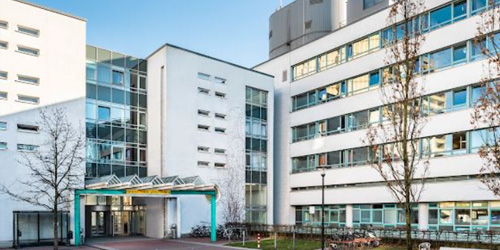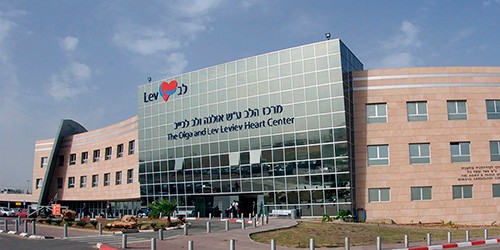1. What is plasmablastic lymphoma? |
2. Diagnosis of plasmablastic lymphoma |
3. Treatment of plasmablastic lymphoma |
4. Prognosis of plasmablastic lymphoma |
5. Clinics for treatment |
6. Cost of treatment |
Plasmablastic lymphoma is a rare and aggressive type of blood cancer that most commonly affects people with weakened immune systems, such as those with HIV. However, cases have also been reported in patients with other immunodeficiencies, as well as in individuals with no apparent immune problems. Although this lymphoma often does not respond to conventional therapies, modern therapeutic approaches such as a combination of chemotherapy, immunotherapy, stem cell transplantation, CAR-T cell therapy can achieve higher remission and survival rates. These modern methods are actively used in clinics in Turkey, Israel, Spain and Germany, where doctors have achieved significant success in the treatment of plasmablastic lymphoma.
What is plasmablastic lymphoma?
Plasmablastic lymphoma (PBL) is a type of diffuse large B-cell non-Hodgkin’s lymphoma. The disease affects B-lymphocytes, which are part of the immune system and play an important role in fighting infections. During the process of activation, they turn into plasmablasts. These are young plasma cells that divide rapidly and actively produce antibodies. Under normal circumstances, plasmablasts help the body fight infection, but sometimes they begin to divide uncontrollably and become malignant.
PBL often develops in people with immune system disorders such as HIV infection, immunodeficiency after organ transplantation or with autoimmune diseases, and in the elderly. Approximately two-thirds of patients have Epstein-Barr virus infection.
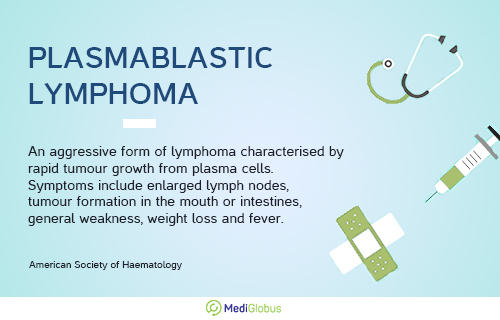
The symptoms of PBL depend on where the cancer cells are localised. The most common sites of involvement are the oral cavity, gastrointestinal tract, and skin. Tumours in the oral cavity manifest as lumps or wounds, sometimes with bleeding. When the gastrointestinal tract is affected, patients may experience pain, diarrhoea or the presence of blood in the stool. Tumours on the skin present as lumps or growths. Lymphoma can also affect the nasal cavity, causing bleeding or runny nose. In some cases, patients have enlarged lymph nodes, night sweats, fever and unexplained weight loss.
Diagnosis of plasmablastic lymphoma
If PBL is suspected, a comprehensive examination is required, which includes:
Physical examination and history taking | The doctor performs an examination to look for signs of enlarged lymph nodes, tumours or other symptoms. Medical history is also reviewed and risk factors such as HIV infection, organ transplantation, or autoimmune diseases are identified. |
Blood tests | A general blood test is done to assess the number and type of blood cells. Biochemical blood tests are needed to assess the function of internal organs. |
Virological tests | The tests are done to detect the presence of HIV, Epstein-Barr virus and other viruses. |
Immunophenotyping | Conducted to determine the type of lymphocytes involved in the disease. |
Biopsy | This is the taking of a tissue sample for laboratory examination under a microscope to determine the type of lymphoma and other characteristics. The tissue sample is taken from a tumour, lymph node or bone marrow. |
Molecular testing | Research is done to identify genetic changes that may be associated with PBL. This information helps in choosing the most effective treatment. |
Visualisation | Computed tomography or magnetic resonance imaging is used to assess the size, location and spread of the tumour. PET-CT is used to assess the activity of the disease and to monitor the results of therapy. |
All the necessary options for effective treatment of aggressive lymphoma, including plasmablastic lymphoma, are available in foreign clinics. Doctors at these clinics actively use the latest therapies to achieve the best possible results in the fight against this disease. Contact MediGlobus to choose a clinic and go for treatment as soon as possible.
Therapy of aggressive lymphoma
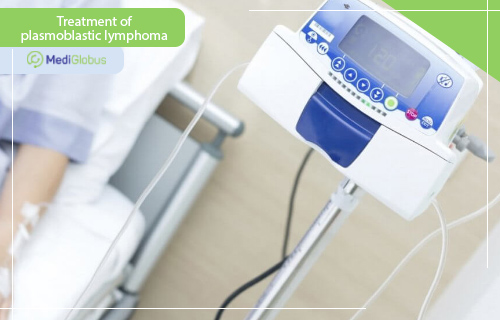
Conventional treatments include a combination of chemotherapy drugs and sometimes radiation therapy. However, because PBL often develops in people with immune system disorders such as HIV infection, conventional treatment approaches may be less effective.
In modern medicine, new approaches to the treatment of plasmablastic lymphoma are being actively researched and applied. For some patients, bone marrow transplantation is successfully used abroad as part of the complex treatment of PBL. Doctors are also achieving good results with immunotherapy using monoclonal antibodies, CAR-T cell therapy, protein inhibitors and other drugs. These innovative therapies aim to target cancer cells in a targeted way, minimising side effects. They can be used to better control the disease, prolong remission and improve patient survival.
Chemotherapy
Chemotherapy is the main treatment for plasmablastic lymphoma and is usually used as the first line of therapy, as without it the median survival is only about 3 months. The National Cancer Control Network (NCCN) recommends intensive chemotherapy regimens to treat the disease:
CODOX-M/IVAC – cyclophosphamide, vincristine, doxorubicin and high-dose methotrexate alternating with high-dose ifosfamide, etoposide and cytarabine;
EPOCH modified-dose – etoposide, prednisone, vincristine, cyclocarbonamide and doxorubicin;
Hyper-CVAD – cyclophosphamide, vincristine, doxorubicin and dexamethasone combined with high-dose methotrexate and cytarabine.
However, recent studies show that such intensive chemotherapy regimens do not always yield meaningful improvements in survival compared to more standardised regimens such as CHOP (cyclophosphamide, doxorubicin, vincristine, prednisone) or CHOP-like regimens. Intensive chemotherapy regimens may be beneficial in young patients with satisfactory general health and high-risk factors.
An additional treatment option for plasmablastic lymphoma is intrathecal chemotherapy, in which chemotherapy drugs are injected into the fluid surrounding the central nervous system. This method helps prevent lymphoma cells from spreading to the central nervous system or treat cells that have already spread there.
The effectiveness of different chemotherapy regimens in PBL still needs further study. It is important to note that each case is unique and treatment should be tailored to the individual patient, taking into account the characteristics of the disease, stage and general health.
For best results, treatment of plasmablastic lymphoma should be carried out by specialised medical centres where modern diagnostic and therapeutic methods are available. Contact MediGlobus experts to choose a clinic and doctor for your treatment. Click on the button below and get a free consultation.
Bortezomib therapy
One promising treatment for plasmablastic lymphoma is therapy with bortezomib, which belongs to the group of proteasome inhibitors.
Proteasomes are structures within the cell that help the cell get rid of unwanted proteins. Bortezomib blocks proteasomes from working in cancer cells, causing them to accumulate harmful proteins and die.
Studies have shown that bortezomib may be effective in treating plasmablastic lymphoma, especially when combined with chemotherapy.
2 retrospective studies examined the efficacy of bortezomib in combination with EPOCH chemotherapy. Results showed that this regimen resulted in complete remission in 100% of patients and 2-year survival in 50% of cases. In addition, patients who received bortezomib as second-line therapy also had a relatively high survival rate. One study showed a 2-year survival rate of more than 50% and an overall response to treatment of up to 90%.
Treatment with immunomodulators
Thalidomide and lenalidomide are drugs that act on tumour cells by binding to specific targets on their surface, leading to their death.
Several studies have shown excellent results of therapy with these drugs. For example, patients who received thalidomide in combination with dexamethasone followed by stem cell transplantation achieved complete remission and maintained it for several years. One patient remained in remission for 10 years of follow-up.
Lenalidomide, an analogue of thalidomide, has also shown high efficacy. Patients with PBL who failed other lines of treatment received lenalidomide in combination with other drugs. As a result, they achieved remission and maintained remission over several years of follow-up.
Although data from large clinical trials are still scarce, the use of immunomodulators in the treatment of PBL looks promising and may be effective both in the initial phase of the disease and in relapses or resistance to other treatment regimens.
Immune checkpoint inhibitor therapy
This is a treatment method that aims to activate the body’s immune system to fight tumour cells. In some studies, the method has shown high efficacy in plasmablastic lymphoma. Patients who underwent the therapy followed by stem cell transplantation went into long-term remission. The drugs are currently being studied and undergoing clinical trials.
T-lymphocytes are special cells in the immune system that specialise in finding and destroying foreign elements, including cancer cells. However, cancer cells can use a special protein called PD-L1 as a kind of “shield” to hide from T-lymphocytes. PD-L1 binds to PD-1 receptors on T-lymphocytes and turns them off, denying them the ability to attack the tumour. Studies have shown that patients with plasmablastic lymphoma have this particular PD-L1 protein on their cancer cells. Immune checkpoint inhibitors block the interaction between PD-L1 and PD-1. This allows T-lymphocytes to regain the ability to recognise cancer cells and destroy them.
CAR-T cell therapy
The method is a new form of immunotherapy in which T lymphocytes are modified with synthetic receptors known as chimeric antigen receptors (CARs). These CAR-T cells are able to recognise and destroy cancer cells, resulting in the destruction of tumours.
CAR-T cell therapy has shown high efficacy in the treatment of recurrent diffuse large B-cell lymphoma. Raghunandan et al. described a case of multiple refractory PBL in a patient with contraindications to haematopoietic cell transplantation. The patient achieved durable remission one year after CAR-T cell therapy. The researchers also reported the case of a patient with PBL resistant to conventional chemotherapy, lenalidomide and bortezomib, who achieved durable remission after treatment with CAR-T therapy. Scientists are continuing to study the effectiveness of the method.
Stem cell transplantation
Haematopoietic stem cell transplantation is another treatment option that can be used for plasmablastic lymphoma.
The patient has their own stem cells taken from the bone marrow or peripheral blood. They then receive high-dose chemotherapy to destroy all the cancer cells. After chemotherapy, the stem cells are injected back into the body to rebuild the hematopoietic system.
Studies show improved survival rates in patients after stem cell transplantation:
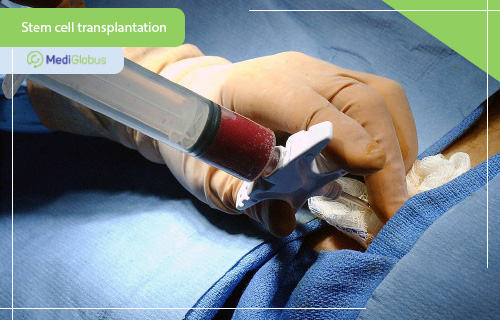
In a study by Cattaneo et al. of 24 patients with PBL who underwent autologous stem cell transplantation, the 2-year overall survival rate was 58%.
Another study by doctors from the Moffitt Cancer Centre found that patients who underwent stem cell transplantation as consolidation therapy had an increased survival period to 36,5 months.
A group of LYSA scientists retrospectively analysed 135 cases of PBL. 6 patients underwent autologous stem cell transplantation. Results showed that 3 patients remained in remission at the last follow-up (13, 17 and 29 months after the procedure), 2 patients relapsed after 8 and 26 months, and one patient died after 78 months of remission.
A recent large retrospective study reported 8 cases in which patients underwent autologous haematopoietic stem cell transplantation after chemotherapy. The 3-year overall and progression-free survival rate was 63,0%.
Highly active antiretroviral therapy
Highly active antiretroviral therapy (HAART) is used in HIV-positive patients with plasmablastic lymphoma. The therapy promotes immune reconstitution to fight cancer cells. However, the effect of HAART on patient survival remains a matter of debate due to insufficient research. Nevertheless, there are cases where patients with HIV-positive PBL achieved durable remission with HAART alone. In addition, some meta-analyses show that combining HAART with chemotherapy and/or radiotherapy improves prognosis.
Radiation therapy
Radiation therapy is used as an adjunctive treatment after first-line chemotherapy. Some studies suggest that the combination of chemotherapy and radiation therapy improves treatment efficacy and prognosis in patients with PBL.
Aggressive lymphoma is treatable with new therapies. Modern drugs and technologies are available to patients abroad that significantly improve the chances of survival and ease the course of the disease. To find out how to go for therapy in one of the clinics abroad, fill in the contact form and wait for a call from a MediGlobus coordinator.
Survival prognosis in plasmablastic lymphoma
When diagnosed with plasmablastic lymphoma, the prognosis is usually poor. The median overall survival (the time a patient lives on average from the time of diagnosis) is 2,76 years, and only 36% of patients live 5 years or more after diagnosis.
The following factors worsen the prognosis: Epstein-Barr virus, poor general health of the patient, advanced stage of the disease and bone marrow involvement.
It is important to note that each case of PBL is unique, and modern therapies have the potential to significantly improve patients’ lives and survival rates. New therapeutic approaches such as chemotherapy, immunotherapy, targeted therapy, and stem cell transplantation offer the prospect of improved outcomes for the disease in the future.
Clinics for the treatment of plasmablastic lymphoma
The opportunity to receive treatment with the latest methods is available in clinics in Turkey, Israel, Spain and Germany. In these countries, new drugs to fight plasmablastic lymphoma are actively studied and introduced into practice. They employ experienced and competent oncologists specialising in the treatment of different types of lymphoma and use modern equipment for diagnosis and therapy. These clinics are committed to providing patients with access to advanced therapies such as modern chemotherapy protocols, immune and targeted therapies, and stem cell transplantation, which can significantly improve treatment outcomes and quality of life for patients with PBL.
To get help from a MediGlobus specialist in choosing a clinic, click on the button below and leave your contacts. A specialist will call you back within an hour and answer all your questions..
Cost of plasma blast lymphoma therapy in 2024
Turkey
| Procedure | Cost |
|---|---|
| Chemotherapy (course) | from $2,500 |
| Autologous stem cell transplantation | from $25,000 |
Israel
| Procedure | Cost |
|---|---|
| Chemotherapy (course) | from $3,700 |
| CAR-T cell therapy | from $80,000 |
| Stem Cell Transplantation | from $50,000 |
Spain
| Procedure | Cost |
|---|---|
| Chemotherapy (course) | from €4,500 |
| CAR-T cell therapy | from €400,000 |
| Autologous stem cell transplantation | from €70,000 |
Germany
| Procedure | Cost |
|---|---|
| Chemotherapy (course) | from €6,000 |
| CAR-T cell therapy | from €490,000 |
| Autologous stem cell transplantation | from €90,000 |
Summary
Plasmablastic lymphoma is an aggressive non-Hodgkin’s lymphoma, a rare type of blood cancer that most often affects people with weakened immune systems, such as those with HIV. However, recent cases have also been reported in patients with other immunodeficiencies, as well as in individuals with no apparent immune problems.
The symptoms of PBL depend on where the cancer cells are localised. The oral cavity, gastrointestinal tract, and skin are most commonly affected. Tumours in the oral cavity manifest as lumps or wounds, sometimes with bleeding. When the gastrointestinal tract is affected, patients present with pain, diarrhoea and blood in the stools. Tumours on the skin present as lumps or growths. In some cases, there is enlargement of lymph nodes, night sweats, fever and unexplained weight loss.
When PBL is suspected, a comprehensive examination is performed, which includes physical examination and history taking, blood tests, biopsy, molecular studies, and imaging.
Traditional treatments include a combination of chemotherapy drugs and sometimes radiation therapy. However, because PBL often develops in people with immune system disorders such as HIV infection, conventional treatment approaches may be less effective.
Today’s medicine is actively researching and applying new approaches to the treatment of plasmablastic lymphoma. Bone marrow transplantation, effective chemotherapy regimens, therapy with the latest drugs of targeting, immune and cell therapy are successfully used for some patients abroad.
With the help of new methods it is possible to control the disease more effectively, prolong the duration of remission and increase the survival rate of patients.
Without therapy, patients with plasmablastic lymphoma do not live more than 3 months. Treatment with modern methods can prolong the life of patients for 5 or more years. The following factors worsen the prognosis: the presence of Epstein-Barr virus, poor general health of the patient, advanced stage of the disease and bone marrow involvement by tumour.
The latest treatment methods are available in clinics in Turkey, Israel, Spain and Germany. The most sought-after hospitals are: Navarra University Hospital, Koç Clinic, American Hospital in Istanbul, Essen University Hospital, Sheba Medical Centre.
Contact MediGlobus for help in choosing a clinic for plasmablastic lymphoma treatment. We will provide a free consultation, answer all your questions, find a medical centre with experienced specialists and access to advanced treatment methods. Leave your contacts and wait for a call from a coordinator.
Sources:
- 1. American Society of Hematology
- 2. Plasmablastic Lymphoma – National Library of Medicine
- 3. Plasmablastic lymphoma: An update
- 4. Plasmablastic lymphoma: current knowledge and future directions
- 5. MyHealthTeam
- 6. Plasmablastic Lymphoma. A State-Of-The-Art Review








